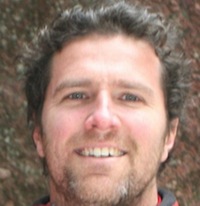
My business card and my email signature list my title at Kapost as “Co-founder and CEO.” It’s the title I’ve held since we started the company five years ago. Our company has changed a lot in those five years; we’re over seventy people now. During that time, I’ve come to realize that the title really didn’t apply at the start of our business, and I’m hoping that it does not apply now. Specifically, I’ve come to see that there are three stages to start-up leadership: 1) Co-founder; 2) Co-founder and CEO; and 3) CEO.
I think the most challenging stage may be the second, where you’re juggling both labels. But the time has come for my company, and for myself, to focus on just being our CEO.
The Co-founder Stage
I started Kapost with two other co-founders and, at that point, it was unnecessary to have any titles besides Co-Founder. There were only three of us after all! Aside from the technical legal points, there was no need for much division of labor and organization between us.
At this nascent stage, we were all on a mad dash to do whatever it took to breathe life into our business, find product-market fit, get it off the ground, and build revenue. We attended TechStars, and its motto–“do more faster”–is perfectly applicable. As a start-up, the odds of success are overwhelmingly against you. You need to maniacally over-achieve–to accomplish much more through ferocious, hyper-efficient use of time–in order to overcome those odds.
The Co-founder – CEO Stage
We wandered in the wilderness looking for product-market fit for quite some time, but thankfully, we eventually found some degree of it and our company started growing. As that occurred, our headcount began to grow, and it became appropriate for us to divide labor. At this stage, the CEO title fit.
The challenge was that the Co-founder title still fit too. In this stage–which I would loosely define as between $1M and $5M of annual recurring revenue–most companies have the beginnings of product-market fit. But the fit is still tenuous. The CEO still needs to personally will the company to progress and achieve “full fit.” And while the company is gaining more investment and enlarging the team, it might not yet be able to bring in the world-class set of leaders to whom the CEO can really delegate.
So while you’re now the CEO, you still need to be the Co-Founder that’s maniacally doing more faster. Problem is, there is so much more to do: more prospects, more customers, more employees, more investors, etc. You are flinging yourself at all of your company’s challenges, but your initial success has created many more challenges.
In the Co-founder stage, I’d be up in the middle of the night trying to broker deals with various supernatural powers (I’d pitch Yahweh, Satan, Buddha … whomever, though by and large they didn’t listen). I’d offer “If you’ll just let us get to $1M ARR, I’ll do anything (as long as not illegal, unethical, etc…).” My assumption was that $1M ARR was some real sign that we’d found fit, and scaling the business with investment dollars would be something as easy as scaling a chia pet with water.
But I found the stage after $1M ARR, the Co-founder-CEO-combo stage, to be much harder. My Co-founder-jump-on-whatever-grenade attitude was still required, but there were exponentially more grenades. I withstood many explosions, and frankly, it has been one of the most challenging periods of my life – energetically and psychologically. Doing more faster at a growing more faster company has its limits.
The CEO Stage
As the company continued to grow, however, the needs continued to change. First and foremost, as we grew to greater scale, we needed world-class executives to manage each of our functional teams. No CEO duty is more important than hunting down these leaders, and I’m very grateful that I’ve been able to assemble an outstanding leadership team, all of whom are way more skilled than I am in their functional area.
Given the superior skill that each leader has in his or her function, it no longer makes sense for me to dive into the weeds to contend with the latest fire. These leaders are experts at their particular type of fires. So the maniacal Co-Founder mentality not only is no longer required, it gets in the way of those leaders and their teams.
Furthermore, as the company gets bigger, a new role is required that can look across all of the various functional departments and keep them aligned to a common cross-company vision. This is the job, of course, of the CEO. As a company gets larger, it becomes a full-time job. In fact, I’ve worked with my board this year to revise my job description to ensure that I’m focused on these important “forest” issues, and no longer racing around too much in the trees.
The company needed me to change at this stage so that my leadership team was fully empowered to run their departments, and I could focus fully on the CEO function. But I also needed to change for myself. Obsessing about all levels of detail, as the business gets to greater and greater scale, generates a very unhealthy cognitive load. Unraveling yourself from that obsession actually does not happen overnight. It takes time, work and patience.
As I mentioned, my business card reads “Co-Founder and CEO” and I will keep it that way. I’m proud to have co-founded Kapost. It is important that I continue to bring an entrepreneurial sense of urgency to all that I do and to all that the company does.
But what the company needs from me, and what I need from myself, have changed. Maniacally doing more faster no longer fits at the scale we’ve achieved. I look forward to the challenges of the third stage, the CEO stage, and to leading our business to new heights.